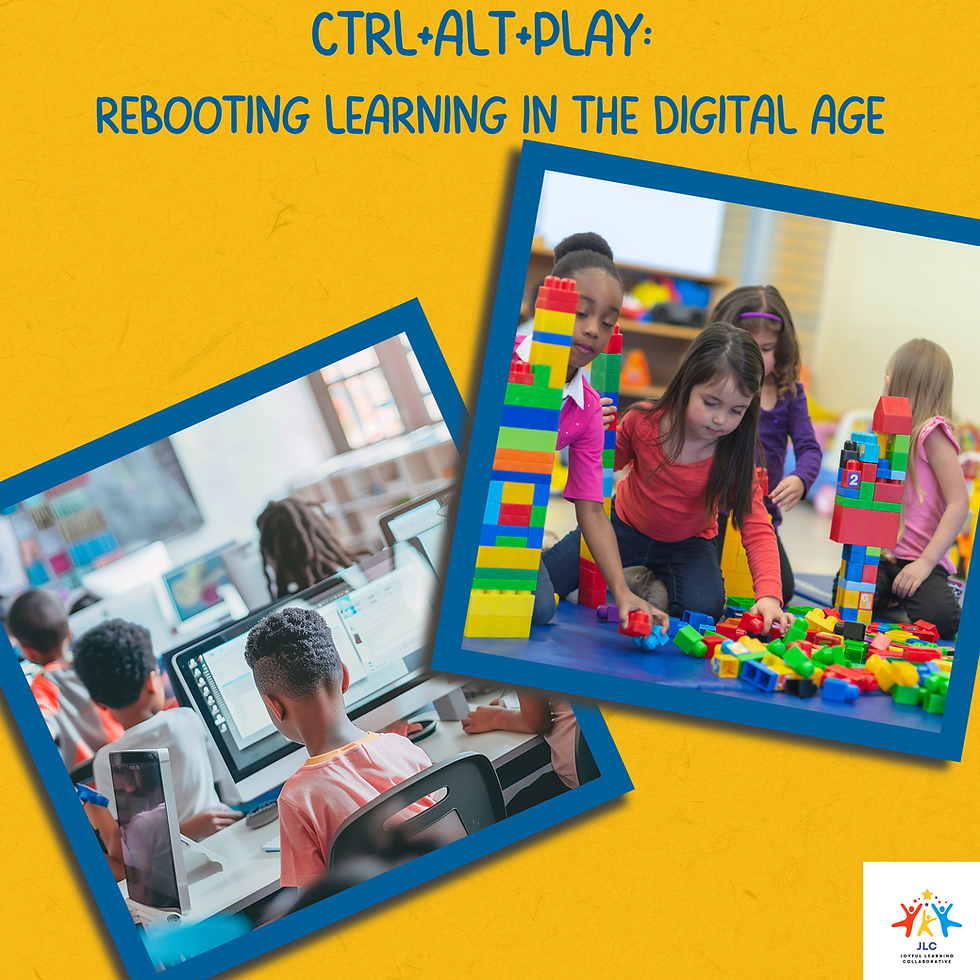Ctrl+Alt+Play: Rebooting Learning in the Digital Age
- Mei Tran

- Jun 5
- 3 min read
In an age of screens and digital shortcuts, Dr. Mei Tran reminds us why play still matters. This post calls on educators and communities to protect space for curiosity, collaboration, and joyful learning in today’s tech-driven classrooms.

In a world of self-driving cars and AI-generated content, it’s no surprise that our classrooms have become increasingly saturated with technology. While digital tools can enrich learning, they should never eclipse the human heart of education. Five years after the COVID-19 shutdowns forced us into remote learning, we’re still grappling with the aftermath. In many classrooms, screens have moved from being a temporary fix to a default feature.
But here’s a hot take: students are not coming to school just to be entertained.
They are there to build life skills, think critically, and understand how the world works. And yet, teachers are inundated with professional development on how to integrate tech, not when or why to pause and ask: is this the best choice for my learners?
Let’s be clear—technology can be powerful when used intentionally. It can help visualize concepts, extend access, and deepen engagement. But it should be a tool, not a teacher. As some education experts have noted, today’s classrooms are increasingly shaped by a vision of technology-forward instruction.
Too often, students are working alone on digital pathways created by a software company, not collaborating, speaking, or problem-solving with their peers. A modern classroom shouldn’t be silent, isolated, and screen-lit. It should be dynamic, messy, and alive with inquiry and joy. That’s where play comes in.
Yes—play.
Play doesn’t mean chaos or a free-for-all. It doesn’t mean teachers are checked out while students run wild like a scene from Jumanji. In the classroom, play-based learning is purposeful. It’s where students choose from rich, standards-aligned tasks like collaborative role play, STEM design challenges, writing stations, building projects, or academic games. These experiences stretch their thinking and spark their creativity.
In my district, we’ve adopted a “Joyful Learning” initiative that builds in soft starts each morning. Though it’s just a small window of time, the impact is huge. After a weather unit, my second grade students designed shelters that could withstand a storm. After a pollinator study, they created bat boxes and wildflower habitats. These moments aren’t fluff—they’re evidence of deep learning, transferred into new contexts with independence and joy.
And yet, in a system obsessed with assessment and outcomes, the intangible skills cultivated through play—collaboration, perseverance, language skills, flexible thinking—are often sidelined. We hear about a national literacy crisis, with some experts citing screen overuse as a contributing factor. The response? More digital tools—when what kids really need is more story time, more connection, more play.
I’m not saying we should throw out all tech. But we can’t afford to let it take over. We must protect spaces for students to create, question, build, and explore—together.
Play is how children make meaning. It’s how they discover what they’re capable of. And it’s how they bring their learning to life.
Teachers, I know we’re tired. I know the system is demanding, often dehumanizing. But we’re not powerless. We can raise our voices, partner with families, and push back on the myth that tech is always the answer. The quality of our communities’ education is at stake.
Let’s advocate for more time to discover and play.
Let’s keep our students engaged through passion projects and peer collaboration.
Let’s keep them entertained by bringing their learning to life—not to the nearest device.
Let’s keep them playing!




Comments